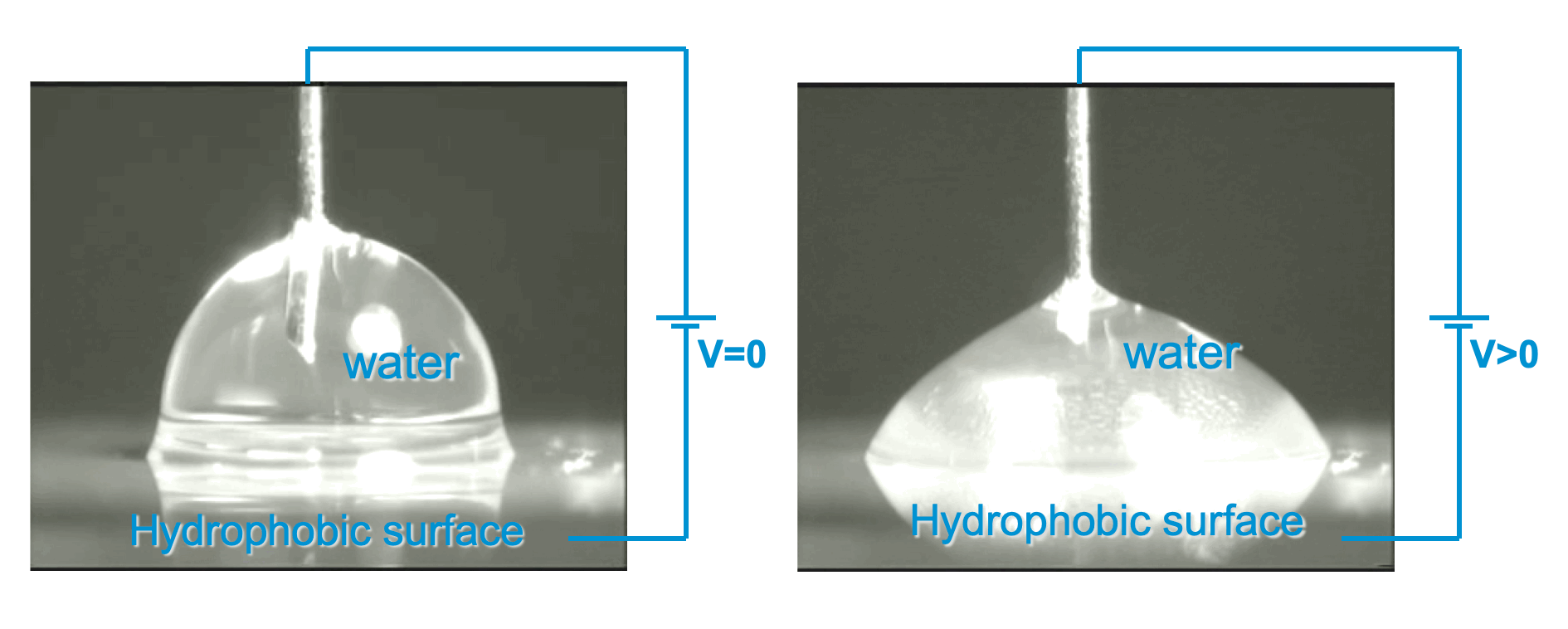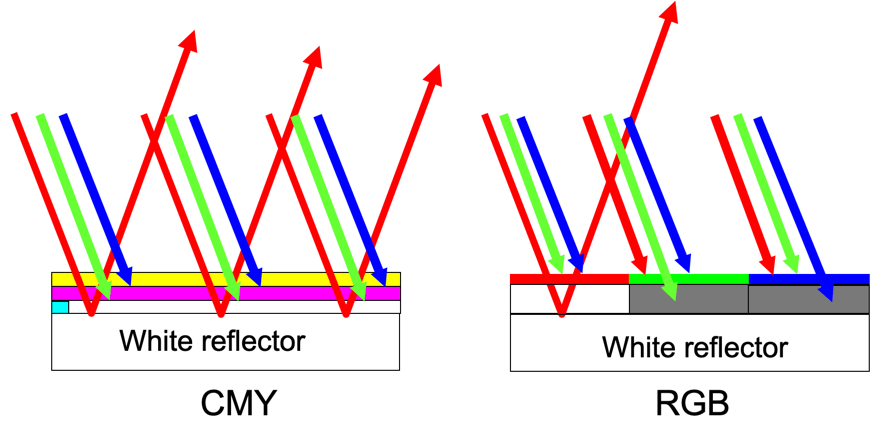Electro Wetting Display technology (EWD)
Etulipa’s displays are based on its patented 2nd generation Electro Wetting Display (EWD) technology. The first product based on this technology was a full-color Electro Wetting Display (EWD) panel that consumes less than 7 W/m2 and runs continuously on a solar panel and battery. Electronic-paper (ePaper) displays like these use the ambient light that falls on the display surface and reflect it back to the eye of the observer, resulting in excellent readability under all conditions. Since reflective displays do not emit light but reflect it they create zero light pollution, are not intrusive, and produce zero emissions>.
How does it work?
Electro wetting uses the surface tension of liquids. Currently, we work with a pixel size of 10 mm. Each pixel has many tiny cells, and each cell contains a transparent polar liquid and a colored oil that covers a hydrophobic surface. Applying a low voltage to the cells contracts the oil into a small droplet. This creates an optical switch, which can be opened or closed. Each pixel switches separately. Since the displays are driven by voltage and not current flow, they are highly energy efficient. That makes Etulipa’s displays ultra-low-power.

Great contrast and bright colors
Etulipa’s EWD technology creates the color displays by stacking three layers of cells above each other. These are cyan, magenta and yellow, similar to the printing industry. Each layer has pixels that can be switched to an absorbing or a non-absorbing state. The whole surface area reflects the appropriate component of light and this results in more saturated colors and better contrast than any other available color ePaper technology.

Other ePaper technologies typically use an RGB approach. In the figure above, red light is reflected from a CMY stacked Electro Wetting Display (left), and from a simplified RGB-based display. In the <CMY approach the full area reflects incoming light, whereas with the RGB display only one third of the area reflects incoming light. The RGB approach will yield non-saturated colors.
Outdoor temperature range
Etulipa’s EWD technology has been specially developed for outdoor use. The displays can operate in all weather conditions, varying from extreme cold in winter to extreme heat in summer. Etulipa has tested the outdoor performance of its Electro Wetting Display modules according to the strict Mil. Std. 810G* guidelines. Critical tests involve performance and compliance at temperatures from -30 °C all the way up to +65 °C.
* Mil. Std. 810G, Department of Defense Test Method Standard, Environmental Engineering Considerations and Laboratory Tests, 31 Oct 2008.
Video speed:
High quality video displays need a high frame rate. EWD technology has the intrinsic capability to switch the droplets at high speeds to produce video displays.
The Electro Wetting Display technology brings even more advantages. Click here for the overview.
Don’t forget to visit our Q&A
Etulipa. Standing out naturally.
WHITEPAPER
Electrowetting displays: the future alternative for LED displays
There has been a long quest for digital outdoor displays to become environment friendly. Up to now, energy consumption and light pollution prevent regular displays to take this role. This whitepaper explains why Etulipa’s Electro Wetting Display technology is at the forefront of this change. It gives a short overview of the basics of Electro Wetting Display technology, and goes on to explain why full color and video combines with the environmentally friendly technology of Etulipa’s Electro Wetting displays.
